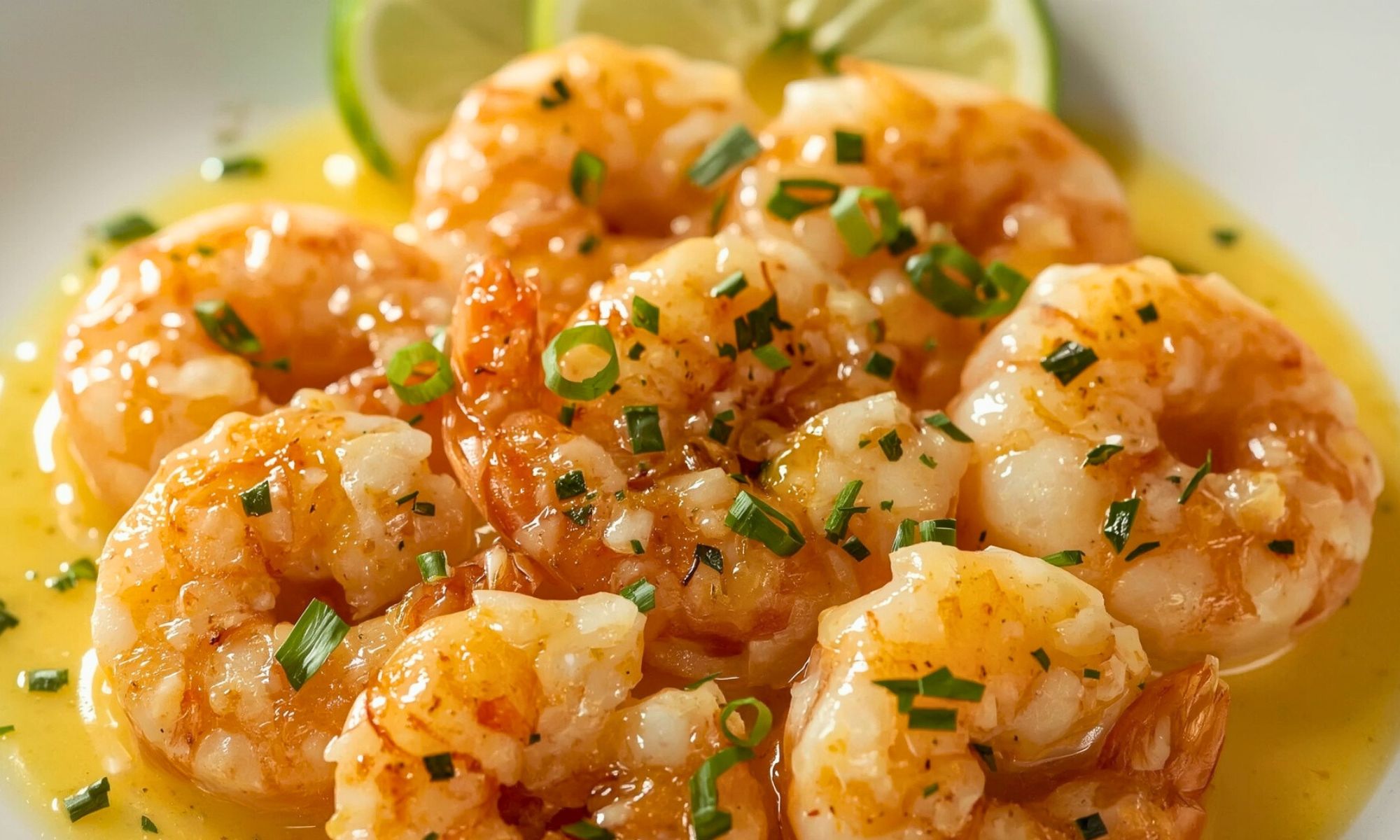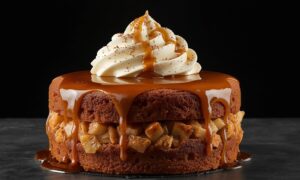Picture this: you’re standing in your kitchen, and suddenly the entire room fills with an aroma so intoxicating that your neighbors start knocking on your door. That’s what happens when you combine plump, sweet shrimp with saffron, the world’s most precious spice that costs more per ounce than gold, yet transforms a simple weeknight dinner into something that tastes like pure luxury.
Here’s what nobody tells you about Sautéed Shrimp in Creamy Saffron Sauce, it’s not just another seafood recipe. It’s your secret weapon for those moments when you wanna impress someone without spending three hours in the kitchen. Twenty minutes from start to finish, and you’ve got something that looks like it came from a fancy French bistro.
The magic isn’t just in the saffron, though that’s definitely the star. It’s in understanding how these flavors dance together. Saffron brings this earthy, honey like sweetness that wraps around shrimp like a silk scarf. Add cream to the mix, and you’ve got a sauce that’s rich without being heavy, complex without being fussy.
This recipe is gonna change how you think about weeknight cooking. No more settling for boring protein and vegetables when you can create something this extraordinary with ingredients you probably already have in your pantry.
Why This Sautéed Shrimp in Creamy Saffron Sauce Works Every Time
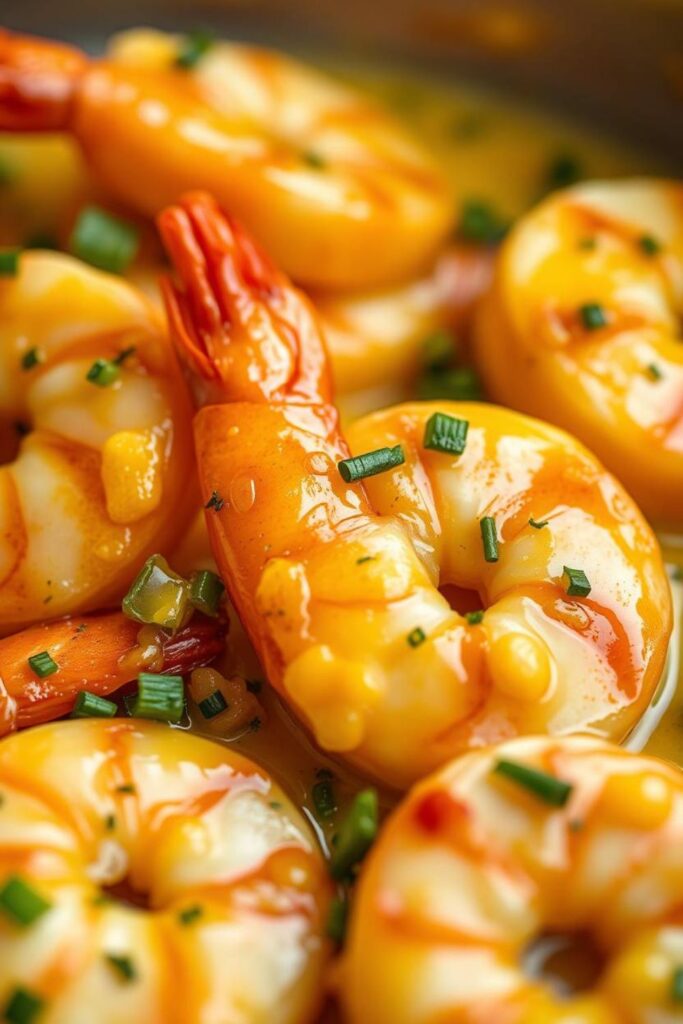
Let me tell you something, I have been making this dish for fifteen years, and I’ve never had a failure. Not once. That’s because the technique is foolproof once you understand the basics.
Shrimp cooks fast. Like, blink and you’ll miss it fast. Most people overcook it because they’re nervous about undercooking it. But here’s the thing, properly cooked shrimp should have just a tiny bit of translucency in the center when you pull it from the pan. It’ll finish cooking in the residual heat.
The saffron needs time to bloom. This isn’t like adding pepper at the end. Those delicate threads need to steep in something warm to release their color and flavor. I always bloom mine in a bit of the cream before adding it to the pan.
The Secret Nobody Talks About
Most recipes tell you to add everything at once and hope for the best. That’s amateur hour. Professional kitchens build flavors in layers, and that’s exactly what we’re gonna do here.
First, we create a fond with the shrimp, those beautiful caramelized bits that stick to the pan. Then we deglaze to capture all that flavor. The aromatics go in next to bloom in the hot fat. Only then do we add our liquid components.
This technique isn’t complicated, but it makes all the difference between good food and food that makes people close their eyes when they taste it.
Essential Ingredients & Smart Kitchen Swaps
Here’s what you need, listed in the order you’ll actually use them:
For the Shrimp:
- 1½ pounds large shrimp (21-25 count), peeled and deveined
- 2 tablespoons olive oil
- 3 tablespoons butter, divided
- ½ teaspoon kosher salt
- ¼ teaspoon black pepper
For the Saffron Sauce:
- ¼ teaspoon saffron threads (don’t even think about using powder)
- 2 tablespoons warm heavy cream (for blooming)
- 2 shallots, finely minced
- 3 garlic cloves, minced
- ¼ cup dry white wine
- ¾ cup heavy cream
- 2 tablespoons fresh lemon juice
- Salt and white pepper to taste
When Life Gives You Limited Options
Can’t find saffron? I feel your pain, it’s expensive and not always available. But here’s the thing: this dish needs that distinctive flavor. You could try a pinch of turmeric mixed with a tiny bit of sweet paprika, but honestly? Save up and get the real stuff. One small container lasts for months.
No shallots? Regular yellow onion works, but use about half the amount. Shallots are milder and sweeter.
Out of white wine? Try a splash of vermouth or even a good chicken stock. Just avoid anything too acidic, you don’t want the cream to curdle.
Heavy cream is pretty irreplaceable here, but if you absolutely must substitute, try half and half thickened with a teaspoon of cornstarch. The texture won’t be quite as luxurious, but it’ll still taste great.
Picking Perfect Shrimp
Here’s where most people mess up before they even start cooking. Frozen shrimp isn’t the enemy, most “fresh” shrimp at the grocery store was previously frozen anyway. But there are good frozen shrimp and terrible frozen shrimp.
Look for shrimp that’s individually quick frozen (IQF) rather than frozen in blocks. The shell should look translucent, not milky or discolored. And if you’re buying pre peeled, make sure they don’t look mushy or have that ammonia smell.
Size matters too. Go for 21-25 count per pound. They’re large enough to have a good bite but not so huge that they dominate every forkful. Plus they cook evenly without requiring you to babysit the pan.
The Step by Step Dance
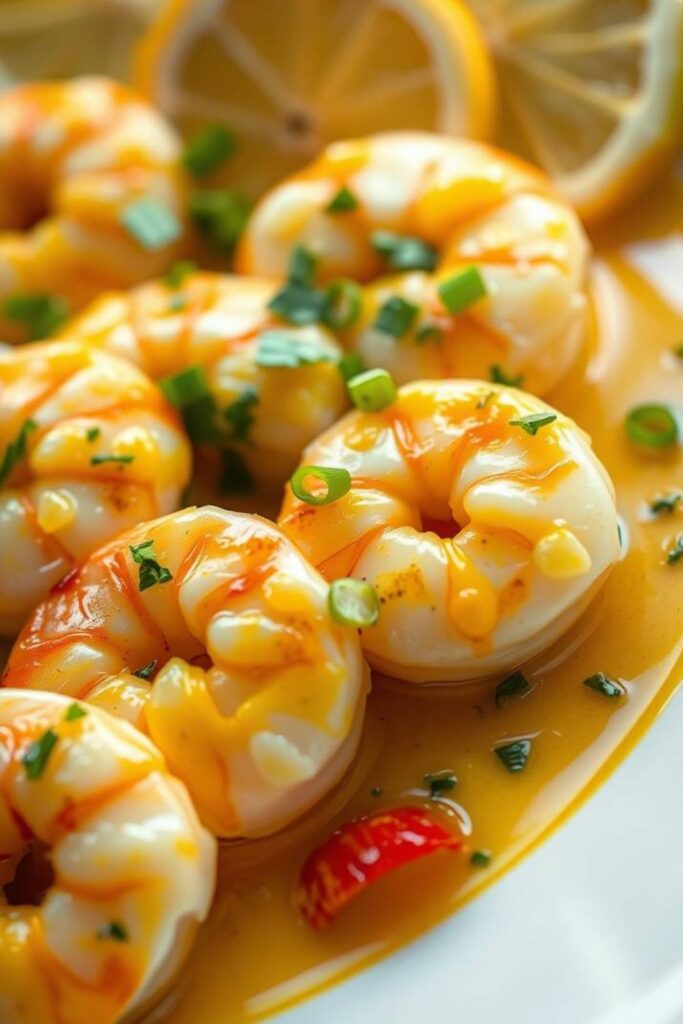
Step 1: Get Your Mise en Place Right
I know it sounds fancy, but mise en place just means “everything in its place.” And with a dish that cooks this fast, you need everything ready to go.
Pat those shrimp completely dry with paper towels. I’m talking bone dry. Any moisture is gonna cause splattering and prevent proper browning. Season them with salt and pepper right before they hit the pan.
Bloom your saffron in two tablespoons of warm cream in a small bowl. Watch those threads release their golden color, it’s like magic happening in real time.
Step 2: The Perfect Sear
Heat a large skillet (not non stick, you want those browned bits) over medium high heat. Add your olive oil and one tablespoon of butter. When the butter stops foaming, your pan is ready.
Add the shrimp in a single layer. Don’t crowd them, work in batches if you need to. Let them sit for 90 seconds without moving them. Seriously, resist the urge to poke and prod.
Flip them once. They should have a gorgeous golden pink color on the first side. Cook another 60-90 seconds, then remove them to a plate. They’ll look barely done, and that’s perfect.
Step 3: Building the Flavor Base
Add another tablespoon of butter to the same pan. All those browned bits from the shrimp? That’s liquid gold right there.
Add your minced shallots and cook for about a minute until fragrant. They should soften but not brown. Add the garlic for the last 30 seconds, it burns easily, so don’t let it go too long.
Pour in your wine and scrape up all those beautiful fond bits with a wooden spoon. Let it bubble and reduce by about half.
Step 4: The Cream Dream
Lower your heat to medium. This is crucial, high heat will curdle your cream faster than you can say “ruined dinner.”
Add the remaining cream first, then stir in your bloomed saffron mixture. Watch as the sauce turns this incredible golden color. It’s like sunset in a pan.
Let it simmer gently for 2-3 minutes until it coats the back of a spoon. Add your lemon juice and the last tablespoon of butter. This final butter addition (called mounting) gives the sauce an incredible glossy finish.
Step 5: Bringing It All Together
Return the shrimp to the pan and toss gently to coat. Cook for just 30-60 seconds until the shrimp are heated through and perfectly cooked. Taste and adjust seasoning with salt and white pepper.
That’s it. Seriously. Twenty minutes from start to finish, and you’ve got restaurant quality food on your table.
Common Pitfalls (And How to Dodge Them)
The biggest mistake? Overcooking the shrimp. They go from perfect to rubber in about thirty seconds, so pay attention.
Curdled cream is another disaster I see often. Keep your heat moderate once you add the dairy, and never let it come to a rolling boil.
If your sauce seems too thick, thin it with a splash of wine or stock. Too thin? Let it simmer a bit longer, or whisk in a small knob of cold butter.
The Science That Makes It Sizzle
Let’s talk about what’s actually happening in that pan, because understanding the why makes you a better cook.
When you sear shrimp, you’re triggering the Maillard reaction, the same process that browns bread and gives coffee its deep flavor. Those golden brown spots aren’t just pretty; they’re concentrated flavor bombs.
Saffron contains more than 150 volatile compounds, but the main ones are crocin (which gives the color) and safranal (which provides that distinctive aroma). Heat releases these compounds, but too much heat destroys them. That’s why we bloom the saffron gently in warm cream rather than tossing it directly into a hot pan.
The cream serves multiple purposes here. It carries fat soluble flavors, creates a smooth mouthfeel, and provides the base for our emulsion. When you add that final pat of butter and whisk it in, you’re creating a temporary emulsion that gives the sauce its glossy, restaurant quality appearance.
Why This Technique Works Better
Most home cooks add everything to the pan at once and wonder why their food doesn’t taste like restaurant food. Professional kitchens understand that flavors need to be built in layers.
By searing the shrimp first, we create fond, those caramelized proteins that stick to the bottom of the pan. When we deglaze with wine, we’re dissolving those flavors back into our sauce. Every step adds another layer of complexity.
The order matters too. Aromatics like shallots and garlic need different cooking times and temperatures to release their flavors without burning. Wine needs to cook off its raw alcohol taste. Each ingredient gets its moment to shine before the next one joins the party.
Tools That Make the Difference
A good heavy bottomed skillet is worth its weight in gold for this recipe. It distributes heat evenly and retains temperature when you add ingredients. I prefer stainless steel or carbon steel, the ability to develop fond is crucial.
Your whisk matters too. A small one gives you better control when incorporating the cream and mounting the butter. And please, use a wooden spoon for deglazing. It won’t scratch your pan and gets into the corners better than anything else.
A fine mesh strainer comes in handy if your cream decides to misbehave. You can strain the sauce to remove any lumps and save the day.
Making It Instagram Worthy (And Delicious)
Presentation isn’t just about looks, though this dish photographs beautifully. It’s about completing the sensory experience.
Serve this over something that’ll soak up that gorgeous sauce. Risotto is traditional, but honestly? Good pasta, creamy polenta, or even crusty bread works beautifully.
A sprinkle of fresh herbs adds color and freshness. Chives, parsley, or tarragon all work well. Just a light hand, you don’t want to compete with the saffron.
Perfect Pairings
This dish screams for a crisp white wine. Sauvignon Blanc cuts through the richness beautifully. Pinot Grigio works too, or if you’re feeling fancy, a good Champagne.
For sides, think light and fresh. A simple arugula salad with lemon vinaigrette. Roasted asparagus. Maybe some crusty sourdough for sopping up every last drop of sauce.
If you wanna go all out, start with a light soup, maybe a simple consommé or gazpacho in summer. End with something citrusy to cleanse the palate. Lemon sorbet or key lime tart would be perfect.
The Bottom Line on Sautéed Shrimp in Creamy Saffron Sauce
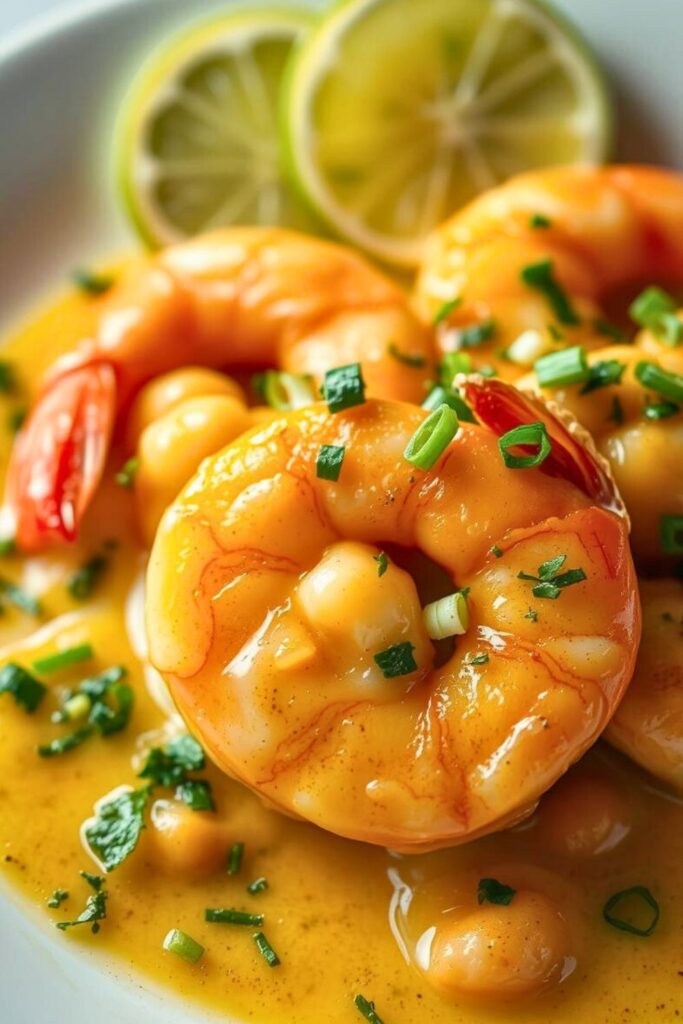
This recipe is your ticket to looking like a culinary genius without the stress. It’s elegant enough for date night, impressive enough for entertaining, but simple enough for a Tuesday when you just want something special.
The key is understanding that good cooking isn’t about complicated techniques, it’s about respecting your ingredients and building flavors thoughtfully. This Sautéed Shrimp in Creamy Saffron Sauce does exactly that.
Don’t be intimidated by the saffron. Yes, it’s expensive, but a little goes a long way. And once you taste how it transforms this dish, you’ll understand why chefs guard their saffron supply like precious treasure.
Here’s my final advice: make this recipe exactly as written the first time. Once you understand how the flavors work together, then start experimenting. Add some fresh thyme. Try it with scallops instead of shrimp. Make it your own.
But first? Just make it. Your kitchen will smell incredible, your dinner will look restaurant worthy, and you’ll have that satisfied feeling that comes from creating something truly special with your own hands.
Frequently Asked Questions
Can I make this dish ahead of time?
The sauce can be made a few hours ahead and gently reheated, but I’d cook the shrimp fresh. Reheated shrimp gets rubbery fast. If you must make it ahead, undercook the shrimp slightly and reheat everything together gently, just until the shrimp are warmed through.
What if my sauce breaks or curdles?
Don’t panic. Remove the pan from heat immediately and whisk in a tablespoon of cold cream. If that doesn’t fix it, strain the sauce through a fine mesh strainer and whisk in another pat of cold butter. Sometimes adding a splash of cold wine helps too.
How do I know when the shrimp are perfectly cooked?
Look for a C shape. Perfectly cooked shrimp curl into a loose C. If they’re curled tight into an O shape, they’re overcooked. They should be opaque with just a hint of translucency in the thickest part when you remove them from the pan.
Can I substitute the saffron with something else?
Honestly? Nothing gives you that exact flavor profile. Turmeric will give you color but none of the complex flavor. If cost is the issue, use less saffron, even ⅛ teaspoon will give you good results. But there’s really no substitute for the real thing.
Why is my sauce too thin or too thick?
Too thin usually means you didn’t reduce the wine enough or added the cream too quickly. Let it simmer longer to concentrate. Too thick? Thin it out with a splash of wine, stock, or cream. Remember, the sauce should coat the back of a spoon but still flow easily.

Swiftly Captions by Tina Smith — Quick, flavorful food recipes made simple, bringing fresh inspiration to your kitchen every day
